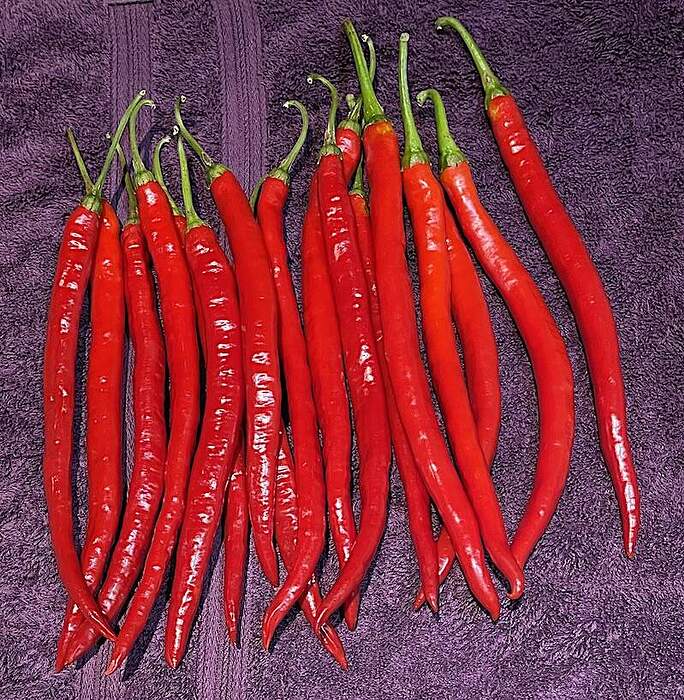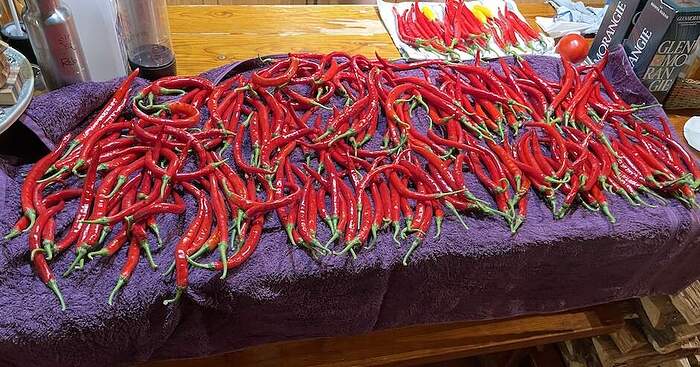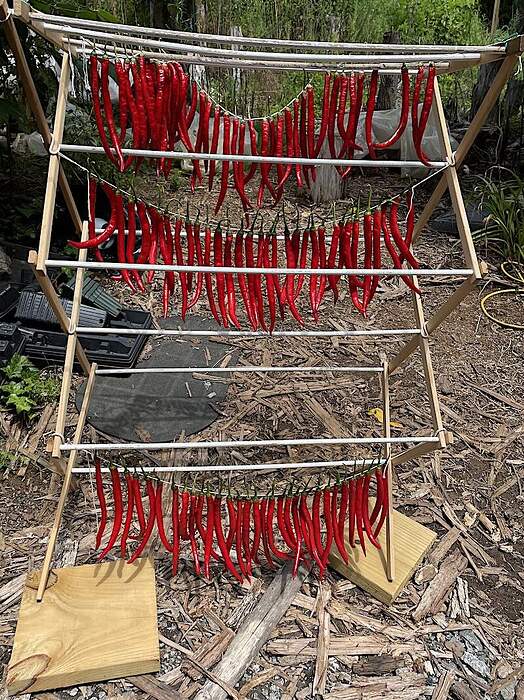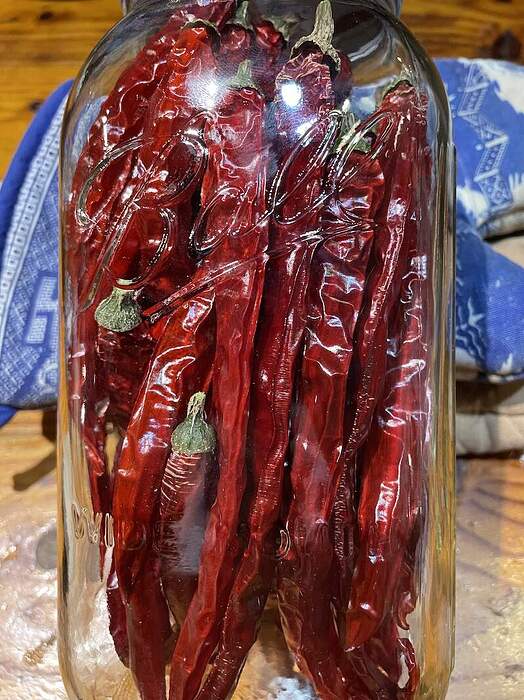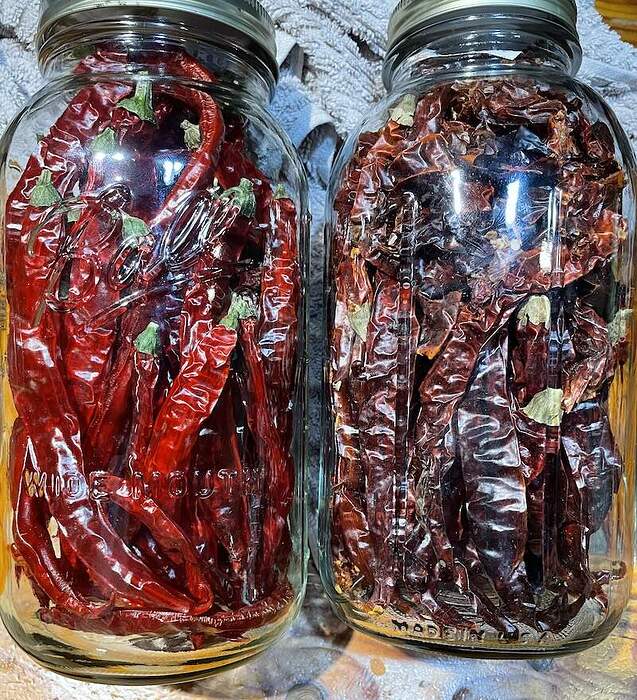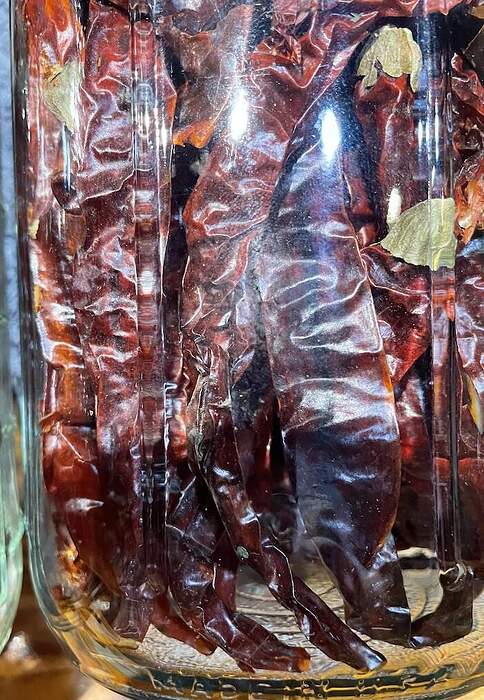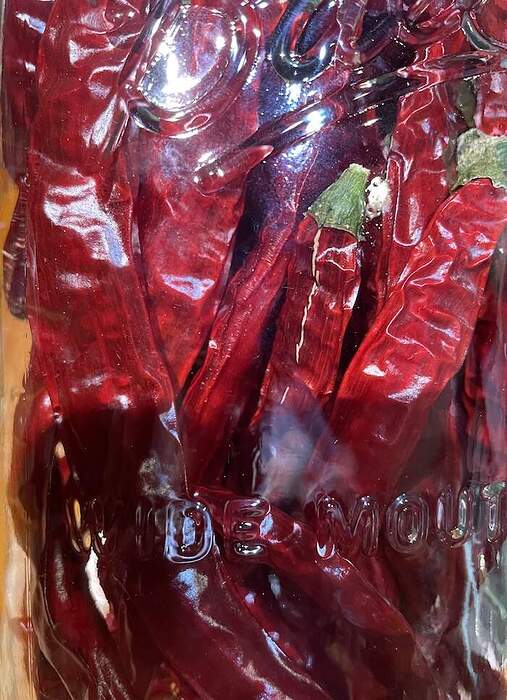While mentioned in the 2025 Food Gardening section, it’s worth putting a spotlight on this famous Sichuan hot pepper.
This is perhaps the most important variety in Sichuan for a reason: the color and flavor are very good. As a dried chile, it imparts deep red color, a lot of unique flavor and a mild pepper heat, compared to, say, cayenne. It’s used in fermented fava/chili paste (doubanjiang), chili oils and chili crisps. It’s fermented and pickled.
There are at least two varieties, which primarily differ in pod length and how wrinkled they are. I first sampled the long variety as a dried pepper, purchased from Mala Market. One whiff of the opened package convinced me this was a special pepper. The fact that it’s not scorching hot makes it very adaptable and useful. Following Mala Market’s recipe for chili oil, it was the best I’ve made.
As a horticulturist and gardener, it was inevitable that I’d search for seeds. In 2025, no vendor was offering seeds in the USA except a lady who was on Etsy. Her images looked legit and the variety of obviously true Chinese vegetables (like Chicken leg Gailan) gave me hope that she had the “real deal”.
Success! Many of this long variety had the classic “J” shape and were 7–8 inches (18–20 cm) long. The plants are super productive. Here are some green ones:
Eight plants yielded a surprising number of peppers each picking.
For best flavor, it’s best to leave the peppers on the plant until the deep red ones slightly wilt, get soft. If the goal is to ferment them into, say, a sambal, firm red is best to create a brine.
Following what little I could glean about the traditional drying methods, the bulk were sewn onto cotton strings and partly sun-dried.
Final drying was in a large dehydrator at low heat, 100–110°F (38–43°C). During this stage, that familiar Er Jing Tiao aroma wafted around the kitchen! The final product was indeed very much like those I bought at Mala Market.
The dried pods are flexible, more so than cayenne or Arbol. They’re translucent and somewhat transparent; seeds and septa “veins” are visible. The jars are vacuum-sealed with oxygen absorbers and getting stored in the cold dark of a cooled basement. This is harvest season; there’s little time to make chili oils or other condiments. A wonderful Sambal Oelek was made from ground fresh peppers which were dissected to save seeds. The seeds have been listed in the Seed Savers Exchange and I’ve got a little under a cup of seeds to spread around. My @gmail.com account is the best way to reach me if interested. Put rob.botanique in front of the at symbol and put pepper seeds in the subject line.
I’ll add more to this subject as time permits.
